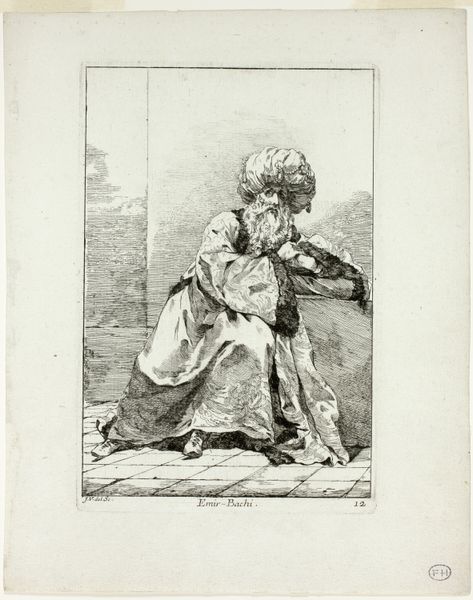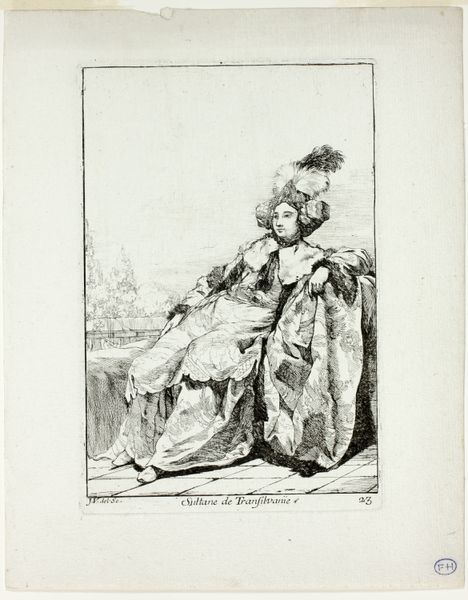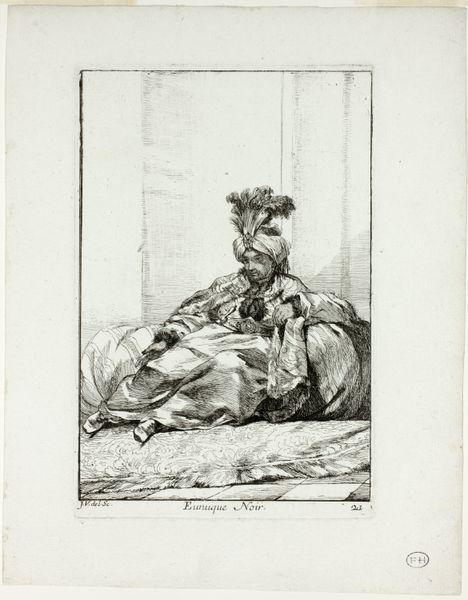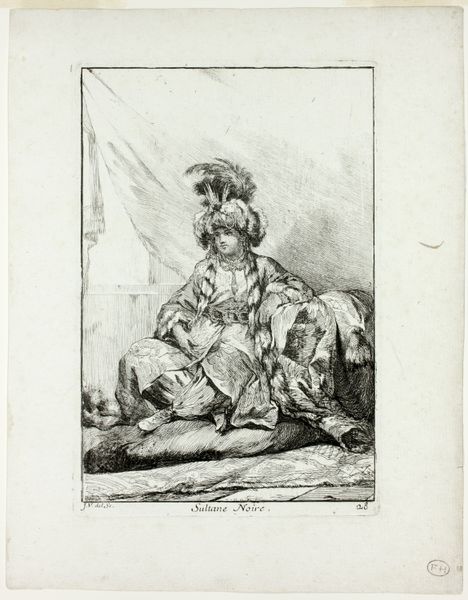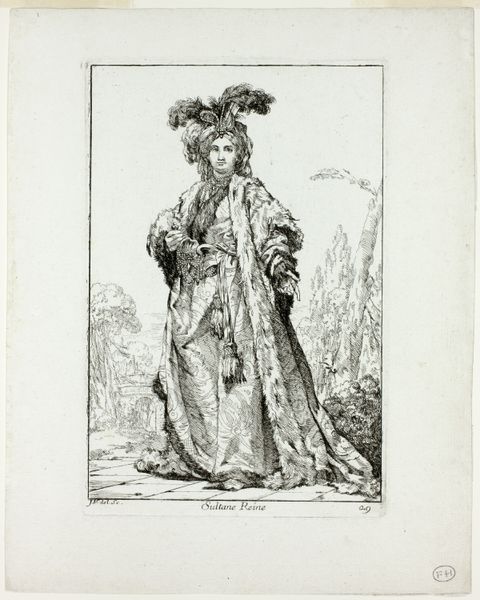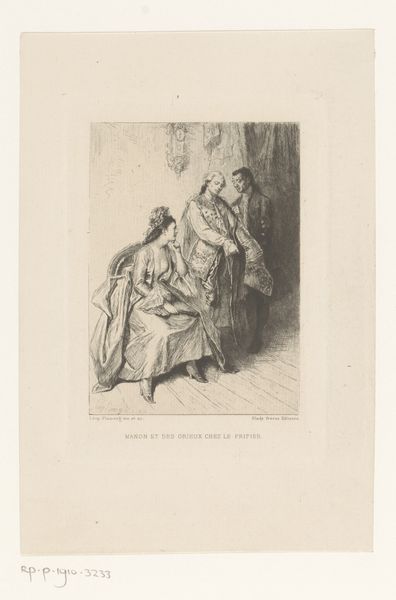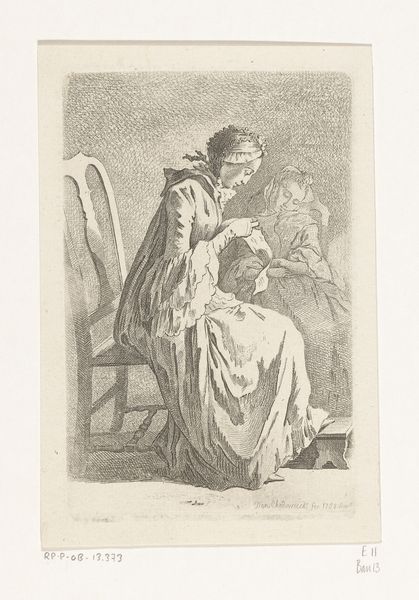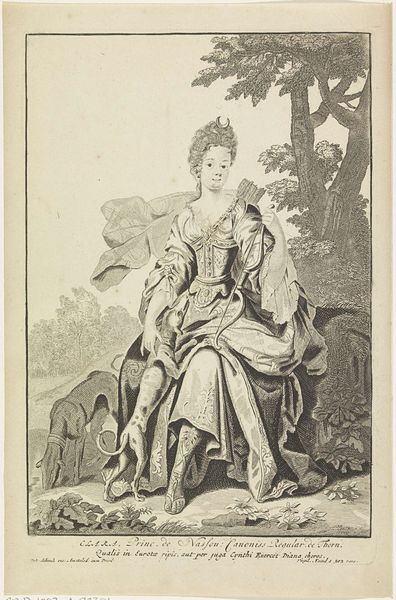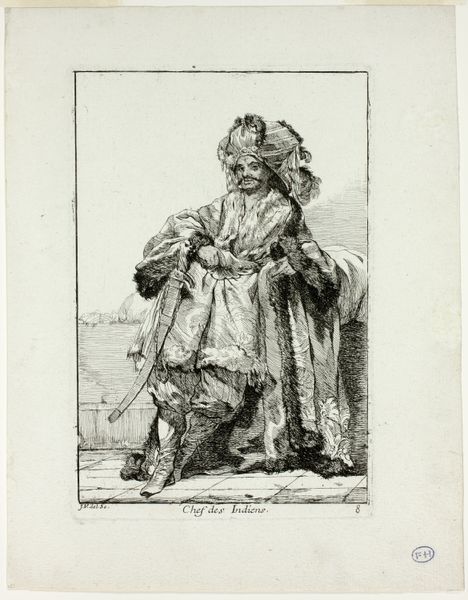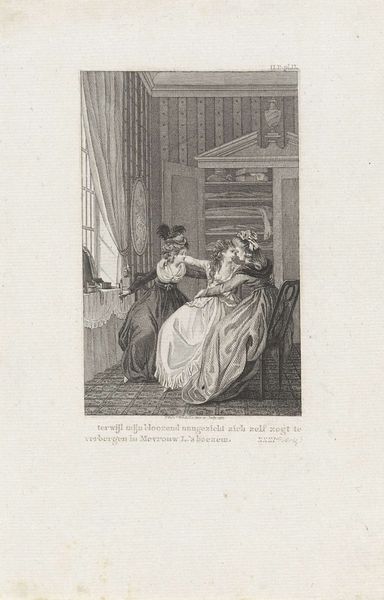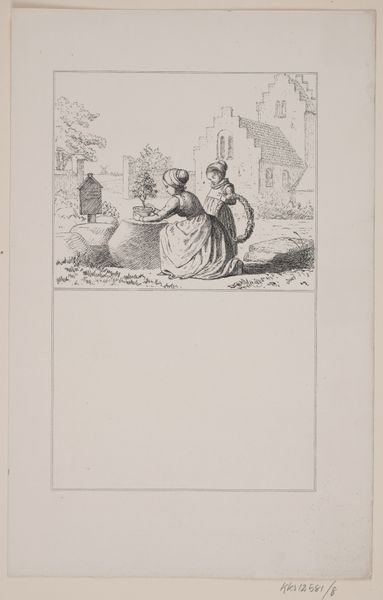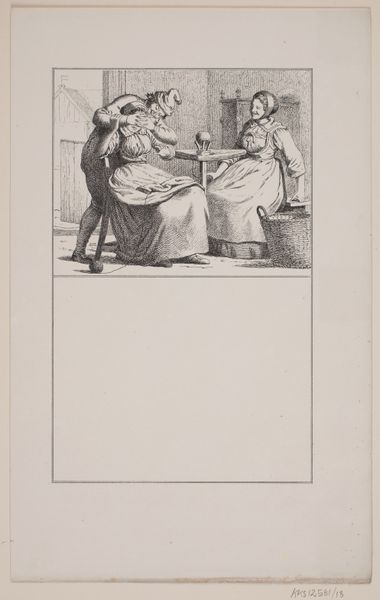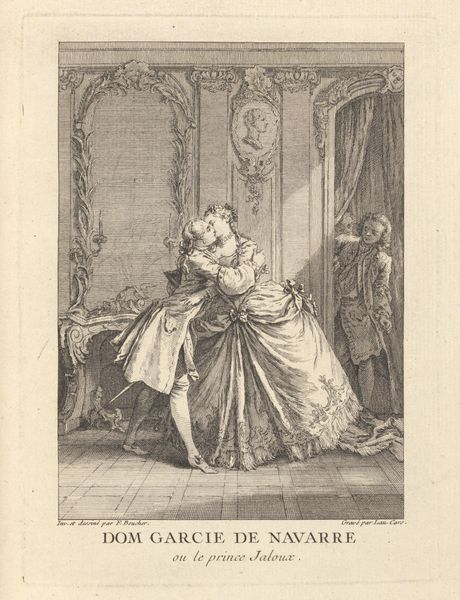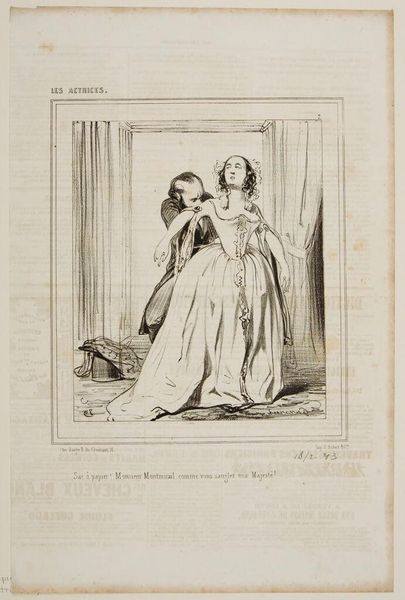
Prestre de la Loy, plate nine from Caravanne du Sultan à la Mecque 1748
0:00
0:00
drawing, print, etching, paper
#
drawing
#
baroque
# print
#
etching
#
paper
#
france
#
genre-painting
Dimensions: 197 × 132 mm (image); 204 × 135 mm (plate); 264 × 207 mm (sheet)
Copyright: Public Domain
Curator: This is “Prestre de la Loy, plate nine from Caravanne du Sultan à la Mecque” by Joseph Marie Vien, etched in 1748. At first glance, what captures your attention? Editor: It has a very theatrical quality to it. The figure is draped and posed as if on a stage, and the linear precision creates a dreamlike remove from reality. Curator: The theatricality you mention speaks to the prevalent Orientalist themes within Baroque art. We see a depiction of a presumed Islamic law enforcer, draped in exotic fabrics. Note how Vien has captured the textures with the etching technique. Editor: The symbols tell a clear story: the turban, the beard, even the very posture. But are we looking at objective observation, or perhaps an imagination colored by assumptions? Curator: Precisely. Vien uses these symbols to conjure a figure that caters to the European fascination with the ‘exotic’ and ‘other’. He leans into pre-established ideas more than faithful portraiture, so that texture is more illustrative than imitative. Editor: Looking closely at the face and gesture, the figure's posture indicates not power, but rather an almost meditative, melancholic demeanor. How does this subvert or complicate the expected reading of "law enforcer"? Curator: The title imposes one meaning onto an image ripe with the potential for more subtle interpretations. Is he really enforcing, or merely contemplating the law? Vien provides us with very fine linework to render very ambiguous ideas. Editor: So the ‘law enforcer’ becomes a screen, onto which viewers could project their ideas, anxieties, and curiosities about the East? Vien presents us with an idea more than a reality. Curator: Indeed. By reducing a culture to simplified, easily digestible images, this piece functions less as an insight, and more as an example of European self-regard during the Baroque period. Editor: It seems what the piece reveals is less about its purported subject and more about its historical viewers. It has left me thinking about how the way we construct and interpret symbols reflects our own cultural lens. Curator: Yes, and Vien's craftsmanship, from composition to line weight, offers a glimpse into how these cultural narratives took on visual form. It all emphasizes how form, when rendered meticulously, truly impacts meaning.
Comments
No comments
Be the first to comment and join the conversation on the ultimate creative platform.
